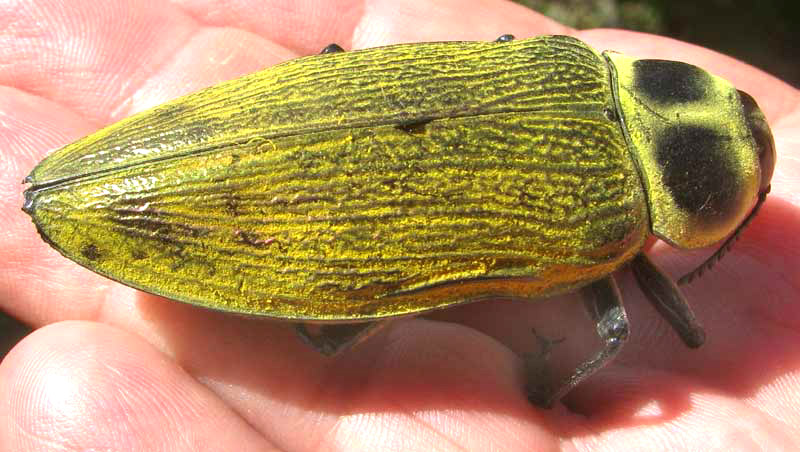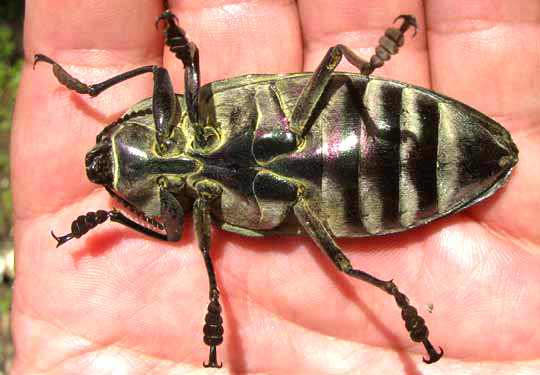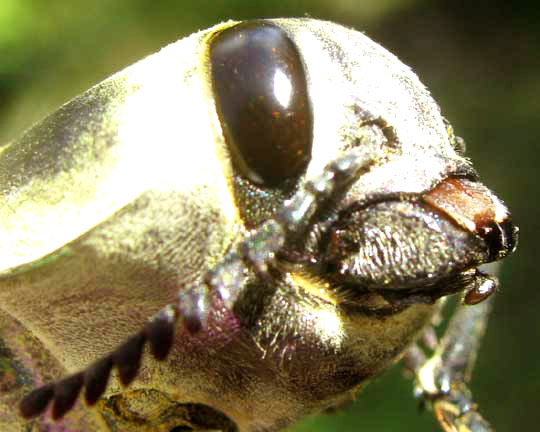Excerpts from Jim Conrad's
Naturalist Newsletter

from the November 13, 2011 Newsletter issued from Hacienda Chichen Resort beside Chichén Itzá Ruins; limestone bedrock; elevation ~39m (~128ft), N20.675°, W88.569°; central Yucatán state, MÉXICO
CEIBA BORER BEETLE
Last Sunday Newsletter reader Harald from Mérida came with his family to visit so we could talk about plants. At the hut's door instead of bowing beneath the thatch to enter he glanced down at a big tuft of Boat Lilies, asked "What's that?", stooped, and retrieved the 2¼-inch long (6cm) beetle shown above.
That's the longest and one of the prettiest beetles I've ever seen. Its yellowness was powdery and came off onto our hands. A view from below is shown below:

Volunteer identifier Bea in Ontario had a good time IDing this one as the Ceiba Borer Beetle, EUCHROMA GIGANTEA, a member of the Jewel Beetle Family.
Having the name, we found out lots of good stuff about it. For example, its larvae feed on decaying timber and prefer wood from the tropical Bombax Family, to which our big Ceiba or Kapok trees belong. Also, Tzeltal-speaking Mayans in Chiapas, southern Mexico, sometimes roast and eat the beetle, and it's used as a colorful decoration or as jewelry throughout the Americas. To the Shaur or Jivaro people of the Amazon region such beetle-ornamentation is said to symbolize wealth, well being and personal power.
On the Internet a website is selling a single beetle, one that's lost its yellow dust, for 25 Euros, or about $34US.
When the yellow wax dust wears off the beetle displays metallic colors. When I first saw the yellow dust covering I thought it was pollen. The dust is secreted only once.
The beetle's larvae, which can reach half a foot long (15cm), mine through fallen timber. I read that often you can spot the adults by walking around fallen Ceibas. No fallen Ceibas lie near my hut, so ours must have flown awhile to get beside my door.
While being handled he behaved as if he were cold or stunned, except when he bit my hand with his pincerlike mouthparts. The bite didn't hurt or cut, though. You can see a close-up of the head area below:
